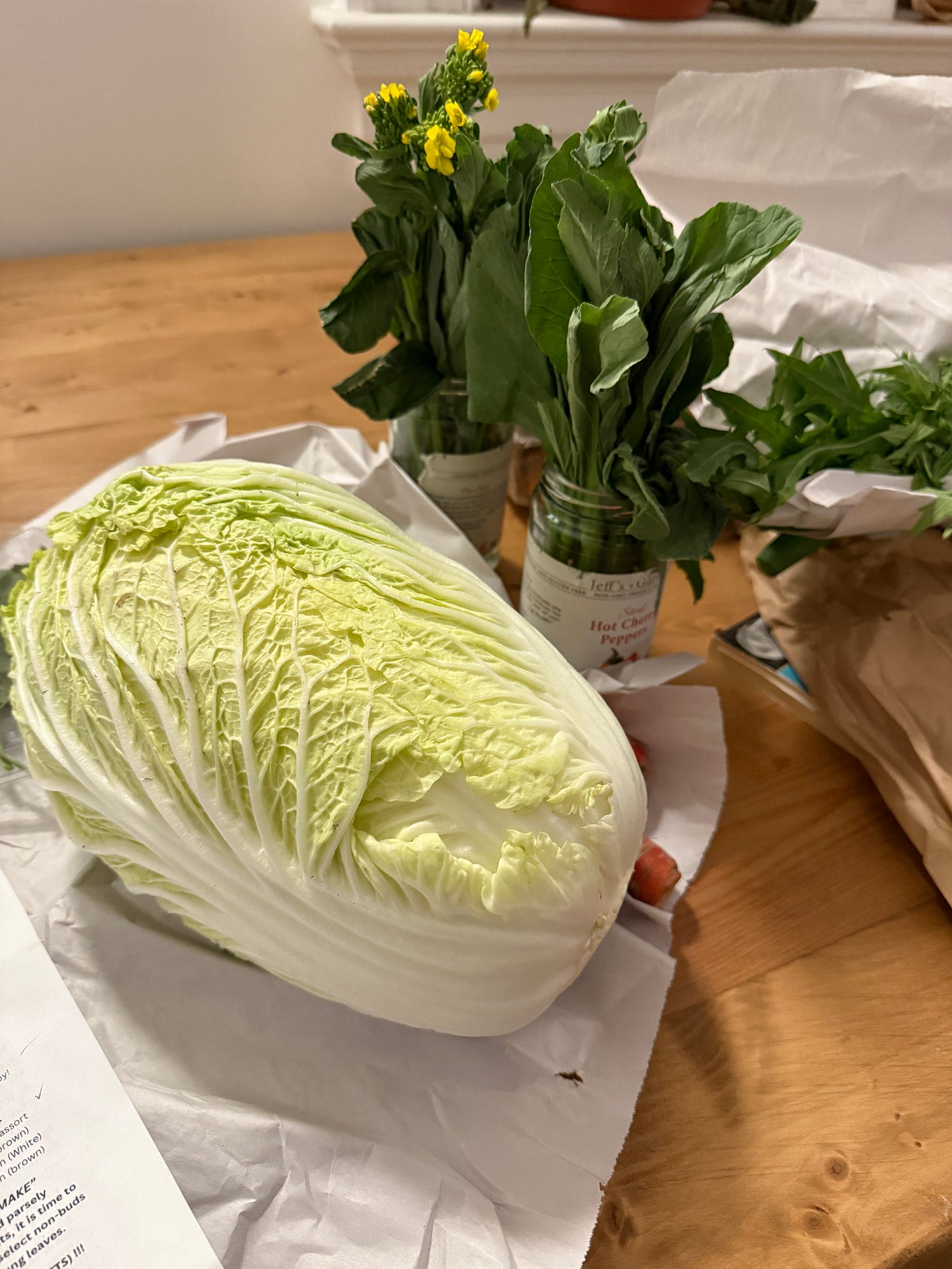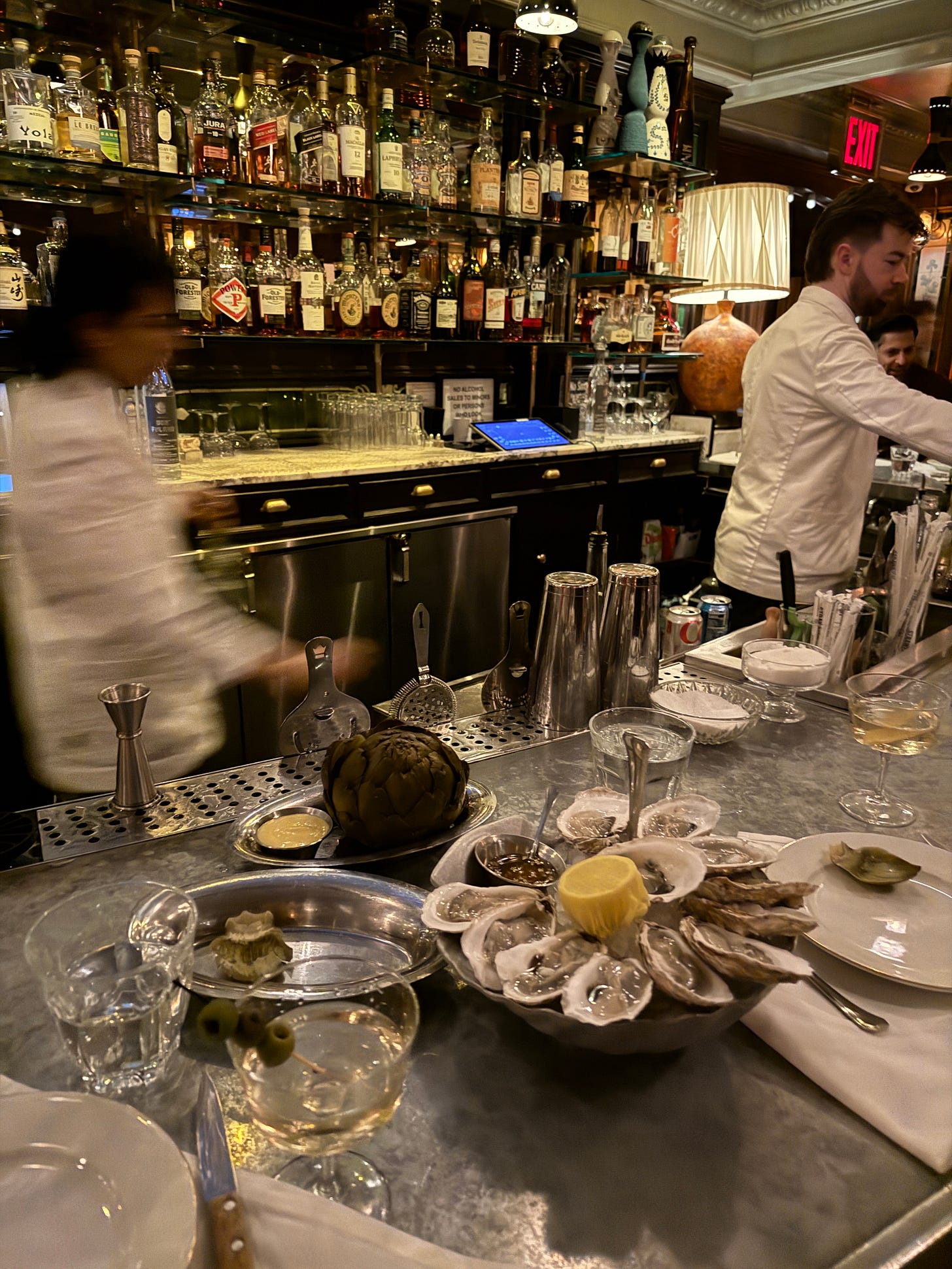I find myself at the end of March. Crocuses are popping up in New York, which feels like a distressing sign that we are at the END of ski season. I have heard that even Colorado has gone to slush.
Vegetables can be an arrangement, although I should find a more fitting vase. Copying my mother with my nanohana bouquet. More beautiful ikebana arrangements can be found here. Nanohana are a harbinger of spring in Japan and according to the site, nanohana are used in arrangements around April.
I haven’t had much to document because I tend to cook on a rotation of very quick classics that David and I like to eat: a Thai-inspired chicken basil stir fry, miso black cod, and stew-like miso soups filled with tofu. I’m the cook and am happy to do so because I can cook exactly what I am craving. He eats appreciatively and cleans. A lucky arrangement for me.
So while I do not want to disturb the balance by having him cook, I thought that perhaps it would be good to get this dish, my lazy version of my family’s winter time nabe (hot pot), on paper. It’s something I would want him to make for me when I’m feeling under the weather, and maybe you’d like to try it too.
There are many varieties of Japanese nabe, as the only defining trait is that it be cooked at the table. This is hardly the only variety, but it is the one we ate most often growing up. The seasonings in this dish are very gentle, as each person would season to taste with gomadare (sesame sauce) or ponzu. While the table would be covered with array of scallions, mushrooms (enoki, shiitake), greens (mizuna, napa cabbage), and tofu to add to the pot, I often limit this to just napa cabbage, scallions, and chicken.
As an aside, David is the sort of occasional cook who measures everything and this loose guideline will likely drive him crazy, but I think that all recipes are just suggestions. Do as you will :)
Really did not plate this, but I lucked out and had some mitsuba to garnish.
The one defining trait of Japanese nabe is that you “shime” 〆or “close” the meal with some carbs. Rice and udon are popular additions.
Because I make this all in one pot in <20 minutes, I add udon in the last 2 minutes and serve it all at once. All of these seasonings and quantities are very much to taste. The chicken meatballs sometimes fall apart, but it is exactly what I like. I also don’t mind that it is fairly bland. David douses his bowl with ponzu.
POACHED CHICKEN NABE
A very very rough template
FOR THE MEATBALLS
1lb ground chicken
1tb minced ginger
1/2 cup diced scallion or onion
~1/2 teaspoon kosher salt (to taste)
2 tablespoons toasted sesame seeds
2 tablespoons sake
1 tablespoon ground flax (can also use 1 egg)
Also prepare:
1/2-1 napa cabbage (depending on appetite and other greens you have)
1 bunch of scallions, or 1-2 onion, or 3-4 stalks of negi (scale up if you like alliums)
1/3 cup sake
1 tablespoon sliced ginger (about 2 inches of the root sliced)
1/4 cup toasted sesame seeds
~1 tablespoon salt, to taste
~8 cups of water
1 inch of kombu
Potential delicious extras: shiitake, enoki, mizuna, tofu, egg (add at the end)
Add water, kombu, ginger, scallions to a pot. Bring to a simmer and add sliced (2 inch) napa cabbage and remaining ingredients.
While simmering, mix together the meatball ingredients. When the pot had come to a simmer and the vegetables have wilted, form rough quenelles with the chicken mixture (I use a spoon and plop them in directly to the pot).
Cover and simmer until meatballs are done. At this point, add frozen udon (if using), and cook for ~2 minutes or until thawed.
Serve. Can garnish with yuzu (if you can find it - orange peel works too) or mitsuba.
Suzuki Farm <3
Also, while I will always enjoy this dish, I was especially inspired to cook this because of my bountiful delivery from my Suzuki Farms CSA (it seems I write about them often, but I have finally committed to the subscription). Their produce is available at Mitsuwa and some other Japanese supermarkets in the New York area, but the CSA is a fantastic deal. Coming out of several weeks of (understandably) many potatoes (satsumaimo - Japanese sweet potato and satoimo - Japanese taro), I was met this week with napa cabbage, negi, and even nanohana.
So charming! A description from this week. Their email newsletter is often accompanied by recipes.
Some NYC Foods
Cupcake from Amy’s Bread always hit. Green for St. Patrick’s Day. My favorite cake :)
Oysters and artichokes and martinis at Cafe Chelsea








